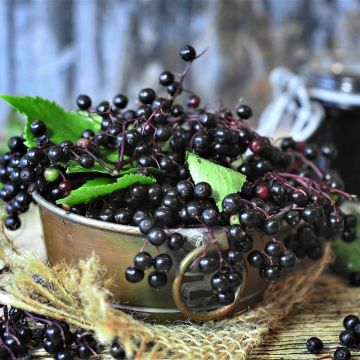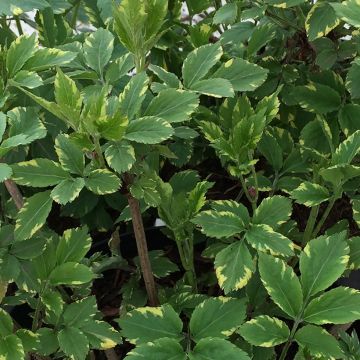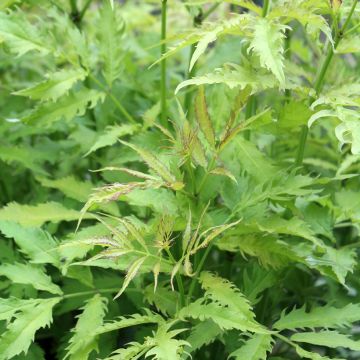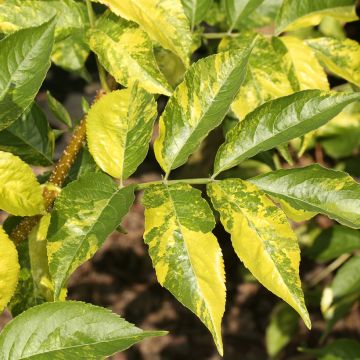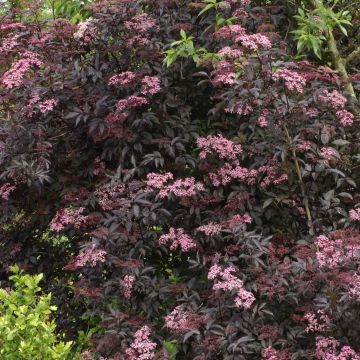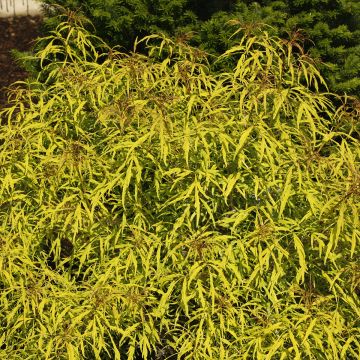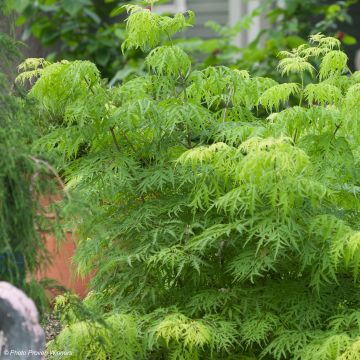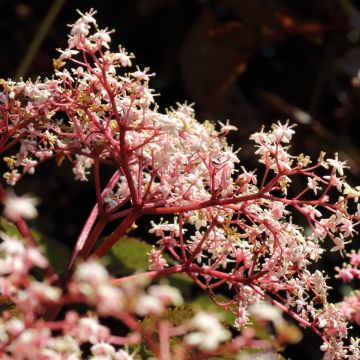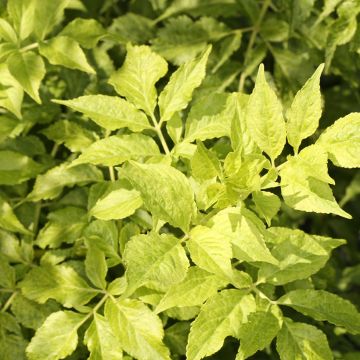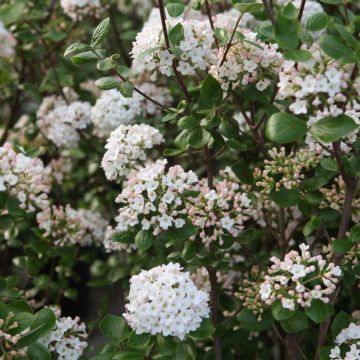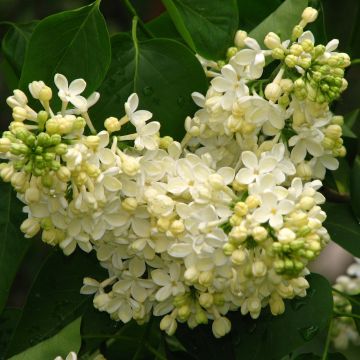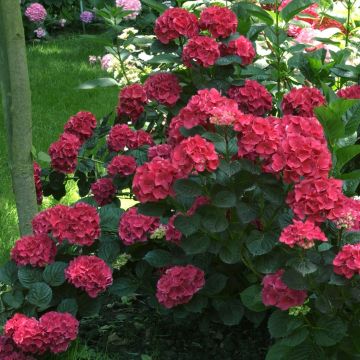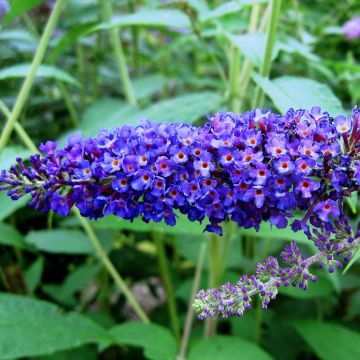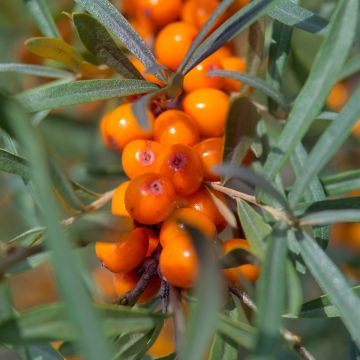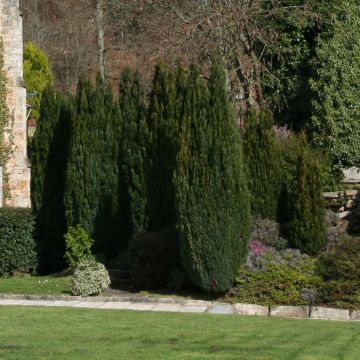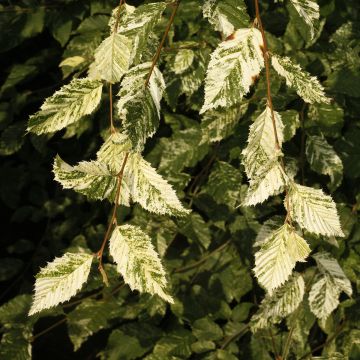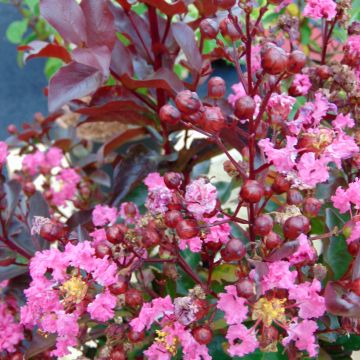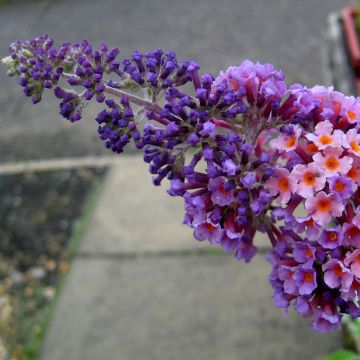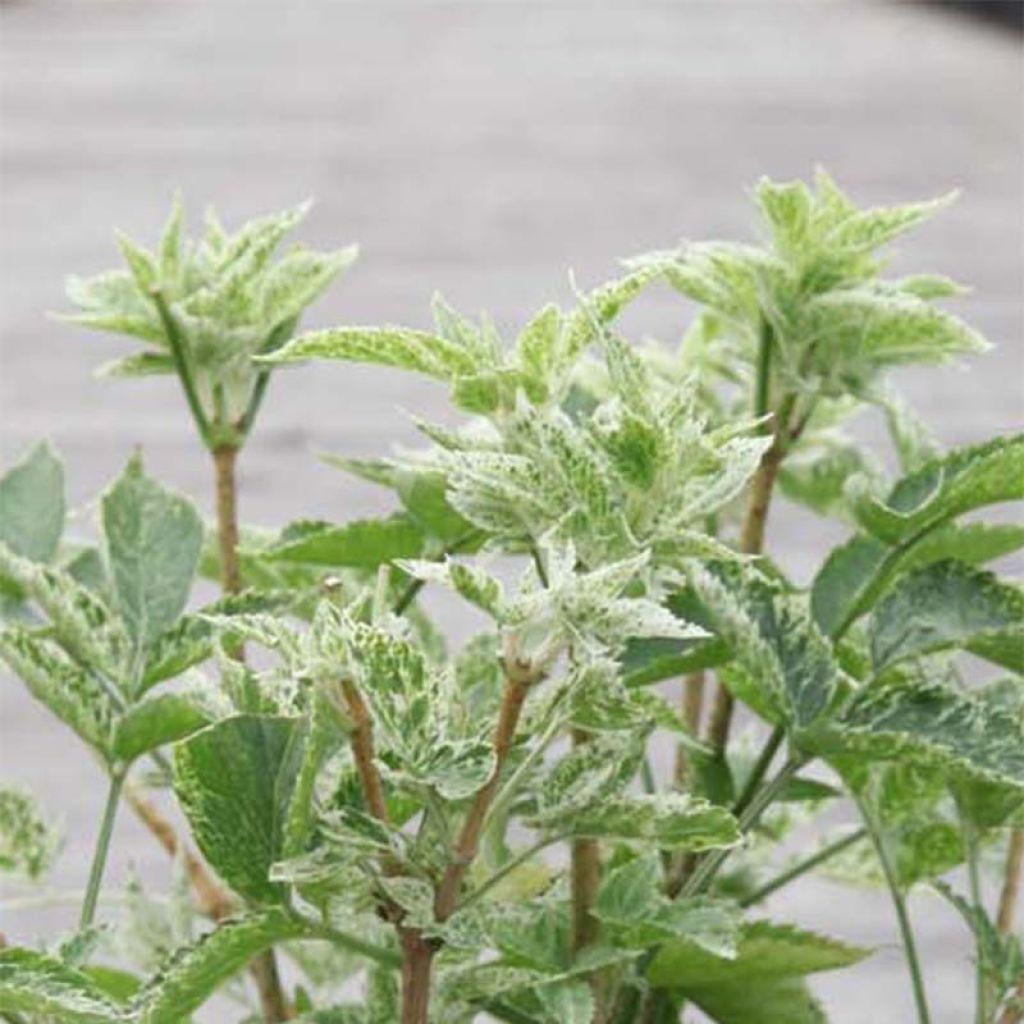

Sureau noir panaché - Sambucus nigra Variegata
Sambucus nigra Pulverulenta - Black Elder
Sambucus nigra Pulverulenta
European Elder, Black Elder, Elder, Elderberry, European Elderberry, European black Elderberry
This item cannot be shipped to the selected country
Delivery charge from €5.90
Delivery to Corse prohibited
More information
Schedule delivery date,
and select date in basket
This plant carries a 24 months recovery warranty
More information
We guarantee the quality of our plants for a full growing cycle, and will replace at our expense any plant that fails to recover under normal climatic and planting conditions.
From €5.90 for pickup delivery and €6.90 for home delivery
Express home delivery from €8.90.
Delivery to Corse prohibited: UE law prohibits the import of this plant from mainland France to Corse as part of the fight against Xylella fastidiosa. Please accept our sincere apologies.
More information

Does this plant fit my garden?
Set up your Plantfit profile →
Description
Sambucus nigra Pulverulenta is a lovely form of the black elderberry with variegated foliage. It eventually forms a beautiful bush with a dense and rounded habit, displaying light green leaves splashed with pure white. In early summer it is adorned with large, fluffy white umbels, followed by edible black berries. Hardy and deciduous like all black elderberries, this variety has a slower growth rate than others, and its foliage should be protected from the intense rays of the sun. Spectacular and bright, it makes a welcome addition to a large country hedge, in a semi-shaded location.
Sambucus nigra Pulverulenta is a plant belonging to the Caprifoliaceae family, like honeysuckles. It is derived from Sambucus nigra, a wild species found in Europe, North Africa, and as far as Asia Minor. The black elderberry is an opportunistic and highly adaptable wild species, widespread in clearings, hedges, fallow land, coastal dunes, and even in close proximity to human settlements. As such, it is an undemanding shrub that can easily be grown anywhere. The 'Pulverulenta' form has a denser, more branched and rounded habit, reaching 2 to 4 metres (7 to 13 feet) in all directions, with rather slow growth. Its foliage is particularly bright: its leaves are divided into numerous light green leaflets, with almost white serrated edges in spring. In summer the vegetation appears splashed with creamy spots. Flowering usually occurs in June (or slightly earlier or later depending on the climate), in the form of long-lasting false umbels, 10 to 20 cm (4 to 8 in) wide. The small, white, fragrant flowers with 5 petals are borne on reddish petioles. The edible and flavourful fruits are black to purplish berries with soft flesh, measuring 6 to 8 mm (1 in) in diameter.
Pulverulenta black elderberry is an excellent hedge shrub, suitable for locations away from scorching sun that could damage its foliage. Like all elderberries, it is very hardy and can be integrated into a bed of spring or summer flowering shrubs, used as a backdrop for tall perennials (Gunnera, Ligularia, large ferns in moist soil), or placed along a pathway. It can also be kept in a large pot or container for many years. It works well in combination with lilacs, mock oranges, landscape roses, pimpinellifolia roses, sapwood viburnums, variegated Weigela florida, and many other shrubs.
In the kitchen: The flowers can be prepared as fritters or used to make syrup by macerating them in sugar. The flower buds, steeped in vinegar, are used to enhance salads, and the berries are consumed as juice, jellies or jams, or made into wine. They add a pleasant fragrance to apple cakes. Only the flowers and berries without their stalks are edible; the rest of the plant can be toxic.
In the garden: Elder leaves are known to accelerate compost decomposition. Black elderberry leaf extract can be useful in organic gardening to combat mildew and aphid attacks or rodent infestations: macerate 1 kg of leaves in 10 L of water for a few days and spray as needed. It can also be planted in an orchard, where it attracts insect-eating birds.
Report an error about the product description
Sambucus nigra Pulverulenta - Black Elder in pictures
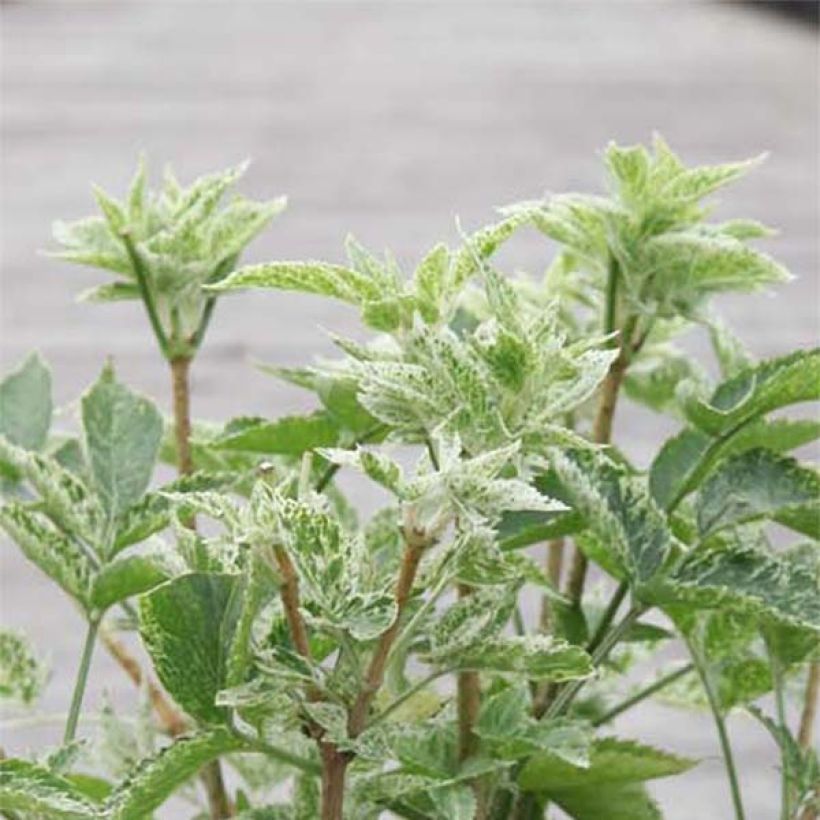

Plant habit
Flowering
Foliage
Botanical data
Sambucus
nigra
Pulverulenta
Caprifoliaceae
European Elder, Black Elder, Elder, Elderberry, European Elderberry, European black Elderberry
Cultivar or hybrid
Other Sambucus - Elder tree
Planting and care
Easy to grow, the Pulverulenta elderberry can be planted in spring or autumn in any ordinary soil, not too poor, deep enough and not too dry, though it tolerates periods of temporary drought in deep soil once well established. It requires little maintenance. Plant it in partial shade, as intense sun may scorch its beautiful foliage. It is undemanding in terms of soil, accepting clay, limestone, sand, and even degraded soils. Ideally use a mixture of half potting soil/half garden soil when planting. It is very hardy. To promote flowering, prune the old branches short to encourage rejuvenation and cut back the young branches by a third, at the end of winter.
Planting period
Intended location
Care
-
, onOrder confirmed
Reply from on Promesse de fleurs
Hedge shrubs
Haven't found what you were looking for?
Hardiness is the lowest winter temperature a plant can endure without suffering serious damage or even dying. However, hardiness is affected by location (a sheltered area, such as a patio), protection (winter cover) and soil type (hardiness is improved by well-drained soil).

Photo Sharing Terms & Conditions
In order to encourage gardeners to interact and share their experiences, Promesse de fleurs offers various media enabling content to be uploaded onto its Site - in particular via the ‘Photo sharing’ module.
The User agrees to refrain from:
- Posting any content that is illegal, prejudicial, insulting, racist, inciteful to hatred, revisionist, contrary to public decency, that infringes on privacy or on the privacy rights of third parties, in particular the publicity rights of persons and goods, intellectual property rights, or the right to privacy.
- Submitting content on behalf of a third party;
- Impersonate the identity of a third party and/or publish any personal information about a third party;
In general, the User undertakes to refrain from any unethical behaviour.
All Content (in particular text, comments, files, images, photos, videos, creative works, etc.), which may be subject to property or intellectual property rights, image or other private rights, shall remain the property of the User, subject to the limited rights granted by the terms of the licence granted by Promesse de fleurs as stated below. Users are at liberty to publish or not to publish such Content on the Site, notably via the ‘Photo Sharing’ facility, and accept that this Content shall be made public and freely accessible, notably on the Internet.
Users further acknowledge, undertake to have ,and guarantee that they hold all necessary rights and permissions to publish such material on the Site, in particular with regard to the legislation in force pertaining to any privacy, property, intellectual property, image, or contractual rights, or rights of any other nature. By publishing such Content on the Site, Users acknowledge accepting full liability as publishers of the Content within the meaning of the law, and grant Promesse de fleurs, free of charge, an inclusive, worldwide licence for the said Content for the entire duration of its publication, including all reproduction, representation, up/downloading, displaying, performing, transmission, and storage rights.
Users also grant permission for their name to be linked to the Content and accept that this link may not always be made available.
By engaging in posting material, Users consent to their Content becoming automatically accessible on the Internet, in particular on other sites and/or blogs and/or web pages of the Promesse de fleurs site, including in particular social pages and the Promesse de fleurs catalogue.
Users may secure the removal of entrusted content free of charge by issuing a simple request via our contact form.
The flowering period indicated on our website applies to countries and regions located in USDA zone 8 (France, the United Kingdom, Ireland, the Netherlands, etc.)
It will vary according to where you live:
- In zones 9 to 10 (Italy, Spain, Greece, etc.), flowering will occur about 2 to 4 weeks earlier.
- In zones 6 to 7 (Germany, Poland, Slovenia, and lower mountainous regions), flowering will be delayed by 2 to 3 weeks.
- In zone 5 (Central Europe, Scandinavia), blooming will be delayed by 3 to 5 weeks.
In temperate climates, pruning of spring-flowering shrubs (forsythia, spireas, etc.) should be done just after flowering.
Pruning of summer-flowering shrubs (Indian Lilac, Perovskia, etc.) can be done in winter or spring.
In cold regions as well as with frost-sensitive plants, avoid pruning too early when severe frosts may still occur.
The planting period indicated on our website applies to countries and regions located in USDA zone 8 (France, United Kingdom, Ireland, Netherlands).
It will vary according to where you live:
- In Mediterranean zones (Marseille, Madrid, Milan, etc.), autumn and winter are the best planting periods.
- In continental zones (Strasbourg, Munich, Vienna, etc.), delay planting by 2 to 3 weeks in spring and bring it forward by 2 to 4 weeks in autumn.
- In mountainous regions (the Alps, Pyrenees, Carpathians, etc.), it is best to plant in late spring (May-June) or late summer (August-September).
The harvesting period indicated on our website applies to countries and regions in USDA zone 8 (France, England, Ireland, the Netherlands).
In colder areas (Scandinavia, Poland, Austria...) fruit and vegetable harvests are likely to be delayed by 3-4 weeks.
In warmer areas (Italy, Spain, Greece, etc.), harvesting will probably take place earlier, depending on weather conditions.
The sowing periods indicated on our website apply to countries and regions within USDA Zone 8 (France, UK, Ireland, Netherlands).
In colder areas (Scandinavia, Poland, Austria...), delay any outdoor sowing by 3-4 weeks, or sow under glass.
In warmer climes (Italy, Spain, Greece, etc.), bring outdoor sowing forward by a few weeks.

































